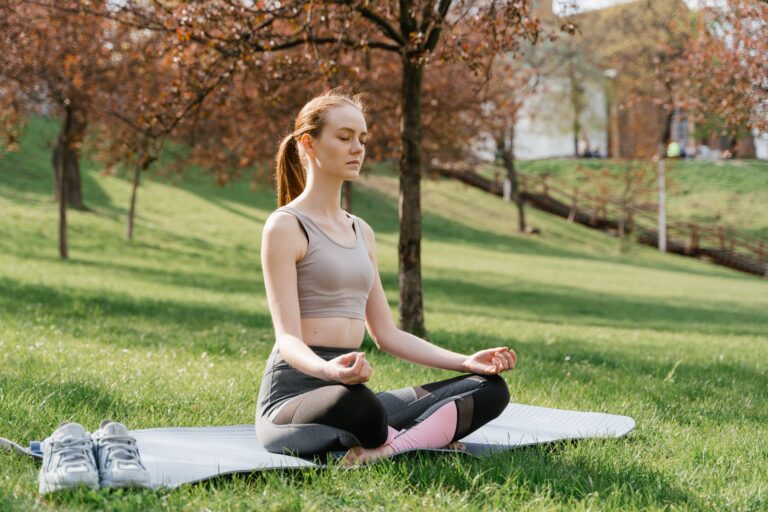TL; DR – Key Points:
-
- Exercise as a Potent Mental Health Booster: Engaging in physical activity releases endorphins and serotonin, reducing symptoms of depression and anxiety, and acting as a natural mood enhancer.
-
- Cognitive Benefits and Stress Relief: Regular exercise improves memory, attention, and decision-making skills while acting as a powerful stress reducer, enhancing overall sleep quality and setting a positive mental health cycle.
-
- Sustainable Habit Integration: Incorporating exercise into daily life involves starting with enjoyable activities, setting realistic SMART goals, and building a supportive environment for long-term adherence.
-
- Transformative Personal Impact: Exercise significantly improves mental and emotional well-being, leading to improved relationships, career success, and a deeper sense of fulfillment.
-
- Inclusivity through Adaptation: Tailoring exercise to individual needs and abilities ensures everyone can access the mental and physical benefits of physical activity.
-
- The Path to a Healthier, Happier Life: Regular physical activity is essential for not just physical health but enhancing mental well-being, marking every step towards exercise as a step toward a more fulfilled life.
In a world where mental health awareness is increasingly at the forefront of public discourse, the simple act of exercise emerges as a potent tool for enhancing well-being. This blog explores the multifaceted benefits of physical activity, not only as a foundation for mental health but as a catalyst for positive change across various aspects of life.
The Benefits of Exercise and Mental Well-being
The relationship between exercise and mood enhancement is well-documented in the field of psychology and neuroscience. When we engage in physical activity, our body releases a surge of endorphins, often referred to as the body’s “feel-good” neurotransmitters. This endorphin release can lead to what is known as the “runner’s high,” a state of euphoria that can uplift mood and bring about a more positive outlook on life (Craft & Perna, 2004). Furthermore, exercise stimulates the production and release of serotonin, a key neurotransmitter involved in the regulation of mood, appetite, and sleep. Regular physical activity has been shown to increase the brain’s serotonin levels, contributing to improved mood and a reduction in symptoms of depression and anxiety (Mikkelsen et al., 2017).
The cognitive benefits of exercise are equally significant. Research indicates that regular physical activity can enhance cognitive functions such as memory, attention, and decision-making skills. Exercise has been shown to stimulate neurogenesis (the formation of new neurons) in the hippocampus, a brain area critical for learning and memory, thereby improving cognitive performance (Snyder et al., 2011). Additionally, physical activity is a potent stress reliever. It reduces levels of the body’s stress hormones, such as adrenaline and cortisol, and at the same time, it stimulates the production of endorphins, which are natural mood lifters and painkillers. The result is a significant reduction in stress levels and an enhancement of overall sleep quality, setting a positive feedback loop for mental health (Gerber & Pühse, 2009).
Making Exercise a Sustainable Habit
Initiating an exercise regimen can be daunting, especially for beginners. Research underscores the importance of selecting enjoyable activities as the cornerstone of a sustainable exercise habit. Enjoyment is a significant predictor of exercise adherence; therefore, starting with activities that you look forward to is crucial (Teixeira et al., 2012), such as hiking, swimming, or being in nature. Gradually increasing the intensity and variety of these activities can prevent boredom and facilitate a comprehensive fitness approach, encompassing cardiovascular health, strength, and flexibility.
Setting realistic, specific, and achievable goals is another cornerstone of successful exercise integration. Goals grounded in the SMART framework (Specific, Measurable, Achievable, Relevant, Time-bound) have been shown to enhance motivation and adherence (Locke & Latham, 2002). Moreover, incorporating exercise into your schedule as a fixed activity can further ensure consistency, treating it with the same importance as any other critical appointment.
The environment in which you choose to exercise can play a pivotal role in sustaining an active lifestyle. Creating a vision and setting clear goals can provide direction and motivation, serving as a constant reminder of the reasons behind the pursuit of physical fitness (Sebire, Standage, & Vansteenkiste, 2011). Tracking progress, either through fitness apps or journals, allows for reflection on achievements and areas for improvement, fostering a mindset of continuous growth.
Adaptability in the face of challenges is essential. Life circumstances change, and so too might your ability to meet initially set goals. Being flexible with your goals and methods of achieving them can help maintain exercise as a regular part of life, even under changes of circumstance.
The social aspect of exercise cannot be overstated. Engaging with a community, whether through fitness classes, clubs, or finding an exercise buddy, can offer substantial motivational boosts and accountability. Social support from these communities or individuals can provide encouragement through the highs and lows of your fitness journey (Carron, Hausenblas, & Mack, 2003).
Beyond the Physical: Transformative Stories and Inclusive Strategies
The transformative power of exercise is evident in countless personal stories worldwide. Individuals have reported significant improvements in managing chronic stress, anxiety, and depression through regular physical activity. These stories serve as powerful testimonials to the mental and emotional shifts that accompany the physical changes brought about by exercise. The discipline, resilience, and confidence gained through overcoming fitness challenges often reflect in other areas of life, leading to improved relationships, career success, and overall life satisfaction (Stults-Kolehmainen & Sinha, 2014).
Significant weight loss and improved physical health are among the most visible outcomes of a consistent exercise regimen. However, the accompanying increase in self-esteem and mental clarity can be equally transformative, enabling individuals to engage more fully with life and experience a deeper sense of fulfillment (Hassmen, Koivula, & Uutela, 2000).
Acknowledging and addressing physical limitations is fundamental to ensuring that the benefits of exercise are inclusive. Adapted physical activities, such as water aerobics, chair yoga, and modified strength training, offer avenues for individuals with mobility issues, chronic conditions, or disabilities to engage in exercise. These adapted exercises can be tailored to individual needs and abilities, emphasising the principle that everyone has the right to access the health and wellness benefits of physical activity (Rimmer, Riley, Wang, Rauworth, & Jurkowski, 2004).
Professional guidance from physiotherapists, occupational therapists, and specialised fitness instructors can play a pivotal role in devising exercise programs that are both safe and effective for those with specific challenges. This personalised approach ensures that exercise is a viable option for enhancing physical and mental health, irrespective of your starting point (Martin Ginis et al., 2016).
Conclusion
The link between exercise and mental health is undeniable, offering a path to not only improved physical health but enhanced mental well-being. By incorporating regular physical activity into your life, you embrace a powerful tool for personal transformation. Whether you’re just beginning your journey or looking to deepen an existing practice, remember that every step taken is a step towards a happier, healthier you. Exercise isn’t just a part of life; it’s a pathway to living fully.
References
Carron, A. V., Hausenblas, H. A., & Mack, D. (1996). Social influence and exercise: A meta-analysis. Journal of Sport & Exercise Psychology, 18(1), 1–16.
Craft, L. L., & Perna, F. M. (2004). The benefits of exercise for the clinically depressed. The Primary Care Companion to The Journal of Clinical Psychiatry, 6(3), 104-111.
Gerber, M., & Pühse, U. (2009). Do exercise and fitness protect against stress-induced health complaints? A review of the literature. Scandinavian Journal of Public Health, 37(8), 801-819. https://doi.org/10.1177/1403494809350522
Hassmen, P., Koivula, N., & Uutela, A. (2000). Physical exercise and psychological well-being: A population study in Finland. Preventive Medicine, 30(1), 17-25. https://doi.org/10.1006/pmed.1999.0597
Locke, E. A., & Latham, G. P. (2002). Building a practically useful theory of goal setting and task motivation: A 35-year odyssey. American Psychologist, 57(9), 705–717. https://doi.org/10.1037/0003-066X.57.9.705
Martin Ginis, K. A., Ma, J. K., Latimer-Cheung, A. E., & Rimmer, J. H. (2016). A systematic review of review articles addressing factors related to physical activity participation among children and adults with physical disabilities. Health Psychology Review, 10(4), 478-494. https://doi.org/10.1080/17437199.2016.1198240
Mikkelsen, K., Stojanovska, L., Polenakovic, M., Bosevski, M., & Apostolopoulos, V. (2017). Exercise and mental health. Maturitas, 106, 48-56. https://doi.org/10.1016/j.maturitas.2017.09.003
Rimmer, J. H., Riley, B., Wang, E., Rauworth, A., & Jurkowski, J. (2004). Physical activity participation among persons with disabilities: Barriers and facilitators. American Journal of Preventive Medicine, 26(5), 419-425. https://doi.org/10.1016/j.amepre.2004.02.002
Sebire, S. J., Standage, M., & Vansteenkiste, M. (2011). Predicting objectively assessed physical activity from the content and regulation of exercise goals: Evidence for a mediational model. Journal of Sport and Exercise Psychology, 33(2), 175-197. https://doi.org/10.1123/jsep.33.2.175
Snyder, J. S., Soumier, A., Brewer, M., Pickel, J., & Cameron, H. A. (2011). Adult hippocampal neurogenesis buffers stress responses and depressive behaviour. Nature, 476(7361), 458-461. https://doi.org/10.1038/nature10287
Stults-Kolehmainen, M. A., & Sinha, R. (2014). The effects of stress on physical activity and exercise. Sports Medicine, 44(1), 81-121. https://doi.org/10.1007/s40279-013-0090-5
Teixeira, P. J., Carraça, E. V., Markland, D., Silva, M. N., & Ryan, R. M. (2012). Exercise, physical activity, and self-determination theory: A systematic review. International Journal of Behavioral Nutrition and Physical Activity, 9, 78. https://doi.org/10.1186/1479-5868-9-78









